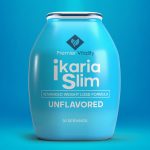So you’re ready to exercise…
A traditional exercise prescription focuses on frequency, intensity, time, and type of exercise.
Frequency: 3-5 times weekly. As a start, 3 times a week is fine.
Intensity: Your target heart rate (THR) is a percentage of your maximum predicted heart rate (MPR). If you are new to exercise try to maintain your heart rate at 65% of your MPR for the duration of your aerobic workout.
As your conditioning improves you can gradually increase the duration and intensity of your workout. Only high level athletes should approach 85% of your MPR! Keep your intensity at a level during which you could maintain a conversation. If you are too breathless to speak…you are probably overdoing it!
{Example: 55 years old; (220-55= MPR of 165) x 65% (0.65) = target heart rate of 107 beats per minute}
Time: 30-60 minutes. It's OK to start out with just 5 to 10 minutes and gradually work up.
Type: aerobic– the use of large muscle groups in a continuous and rhythmic manner.
Examples of aerobic activities include: walking, jogging, tennis, rowing, swimming, treadmill, stair-stepping, biking, dancing, fencing, Cross-country skiing, glider, squash, bouncer (mini-trampoline), hockey, soccer, basketball, aerobics, rollerblading.
Everything Counts…This prescription does not include other valuable modes of exercise that many participants may consider aerobic. These include weight training, martial arts, rodeo, rock climbing, sailing, archery, fishing, golf, diving, bowling, equestrian, water skiing, riflery, cricket and water polo. Such activities are at least good adjunct activities to the above aerobic examples.
While this is a traditional exercise prescription, the American College of Sports Medicine (ACSM) and the National Institute of Health (NIH) Consensus Conference Task Force recommend simply that children and adults should attempt to accumulate 30 minutes of moderate intensity exercise on most and preferably all days of the week.
Several brief bouts of activity are beneficial. Types of exercise that are classified as moderate include occupational functions or activities of daily living as well as leisure time activities including home repair and yard work. Persons already meeting this recommendation may gain further benefit from more aerobic exercise.
The ACSM also recommends some form of resistance training (i.e. Free weights, Nautilus®, Cybex®, Soloflex®) 2-3 times a week and flexibility training (stretching) 2-3 times a week.
The 1996 U.S. Surgeon General Report on Physical Activity and Health recommends moderate exercise to include such activities as brisk walks or raking leaves for 30 minutes a day, running 1 1/2 miles a day in 20 minutes, swimming laps 20 minutes a day, or playing basketball 15-20 minutes a day.
Whatever your exercise plan may be, always consider leading a more active lifestyle by walking up stairs instead of riding elevators, walking short distances instead of driving, and pedaling a stationary bike while watching television. A water aerobics type of exercise works very well for people with arthritis or muscle problems (check with your local Arthritis Foundation, YMCA, and other community-based organizations or colleges for water aerobics classes).
9 Tips to remember:
1. Start slowly and gradually increase over months. Performing too much too quickly sets you up for injury. Forget that old saying; “no pain…no gain”! Half of all people quit exercising in the first week alone simply because they over did it and got too sore.
2. When starting your exercise…
- warm up for 5 minutes (i.e. slow walking or jogging, calisthenics, exercycle, etc.),
- then stretch (a good lower body regimen would include the calf and achilles, the hamstrings (back of the legs), the quadriceps (front of the legs), and the hip and groin, holding each stretch for 15-30 seconds and repeating at least once),
- perform the desired activity,
- “cool down” (slowly reduce your exercise) for 5-10 minutes. It is not safe to suddenly stop exercising, so always remember to include the cool down.
- repeat the stretches. Frequently overlooked but it may be more important to stretch after exercise.
3. Drink enough water throughout the day, and especially during exercise, to maintain a flow of fairly clear urine (a good sign of adequate hydration). If you sweat profusely during exercise it is reasonable to consume equal amounts of water and a sport's drink at those times.
4. Set short and long range goals and reward yourself. Have fun! If it's not fun, you won't stick with it.
5. Alternate different exercise routines. “Cross-training” helps you avoid ruts, maintains your desire to continue exercising over the years, and allows your body to burn the maximum calories during your exercise.
6. Exercise safely (i.e. exercise in daylight as much as possible and consider reflective vests, pepper spray, telling others your route, etc.)
7. For the first couple of weeks of a new exercise program, you may feel more tired or sore. This shall soon pass and your energy level and sleep quality will improve to an even higher level than before.
8. If you make it convenient, you will tend to stick with it longer. Many people have fewer distractions in the AM.
9. Just Do It! You may have some pretty creative “excuses” for not exercising, but I'll bet 90% of these obstacles can be overcome by some equally creative applications of will power and problem solving. Challenge yourself.







